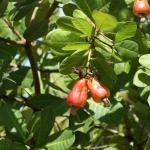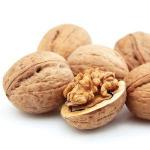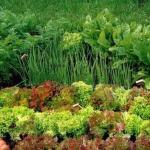Everyone knows that plants cannot live without light at all, since in this case the important process of photosynthesis is impossible. But there are those who get by with a small amount. What kind of plants are these and which ones should I have at home?
Assessment of growing conditions
Many apartments that do not have plants may seem uncomfortable, but their presence creates a special atmosphere of life. But not everyone can pay enough attention to green pets to make even the most capricious of them feel good. Therefore, more and more often people choose fairly unpretentious plants that do not require serious care efforts.
So, it is necessary to select indoor flowers based on the conditions that exist. It is necessary to take into account the orientation of the windows, the amount of light and direct sunlight, the level of humidity and the temperature in the room. Naturally, it is not necessary to know exact numbers; only relative estimates are important, especially when we are talking about unpretentious shade-loving indoor plants. And yet, flowers for a window oriented to the north will be very different from those on the southwest window sill. And for a hallway, where there are no natural light sources at all, choosing a plant will be generally difficult. But that doesn't mean it's impossible.
Shade-tolerant and light-loving
One of the main criteria by which plants differ is their relationship to the sun's rays. There are no shade-loving flowers, because any living creature is literally drawn to the light. True, some need more of it, and some need much less. Some plants feel great under scorching direct rays, but a huge number still prefer bright, albeit diffused light. There are much fewer of those who live well in the shadows, but they exist. As a rule, they are classified as “office” plants that survive well even in artificial light, without any sun at all. Almost all of them have an important common feature - dark green leaves. This is how you can easily distinguish shade-loving indoor plants.
An excess, however, like a lack of sun, that is, an incorrectly chosen location, can have a detrimental effect. Light-loving flowers in the shade stretch out and lose their attractiveness, but otherwise the color of the leaves does not change for the better, which also looks ugly. If conditions do not allow growing a particular plant, it is better to abandon it.
Flowering and decorative foliage
Everyone's tastes are different. Some people are interested in waiting for plants to bloom, while others are more attracted by beautiful leaves, because they are there all year round, while the petals quickly fly away. Nevertheless, there are those who like to “stay in the shadows” in both categories.

Shade-loving flowering indoor plants are, first of all, violets (Saintpaulia), clivia and begonia. It is not always possible to form a beautiful compact shape, but this is often not so important. All these plants grow and bloom quite successfully in dim lighting, but, of course, not in its complete absence. Conventionally, the category of “blooming shade-loving indoor plants” can also include phalaenopsis - the most popular home orchids. However, without sufficient light, they prefer to grow leafy matter most of the time. And in winter, even the most unpretentious specimens from this category will have to be provided with better places - move them from the back of the room to the windowsill, for example.
As for decorative foliage flowers and vines, there are also shade-loving indoor plants. First of all, these are ferns: nephrolepis and adiantum. Secondly, these are arrowroot, calathea, fittonia, aglaonema, aucuba, cordyline. Not all of them can be called completely unpretentious, but their lighting requirements are minimal, and for some the sun is even destructive. If we talk about climbing indoor plants, shade-loving ones include cissus (“birch”), scindapsus, ivy and philodendron. So you can find residents even on northern window sills, if only you had the desire to decorate the house.

Record holders for survival
The most shade-loving indoor plant, more or less popular among gardeners, is probably the ficus. It seems to be in every home, and it is impossible to ruin it. It is actually quite undemanding both in terms of light and other conditions, but there are also plant specimens that are ready to challenge this primacy.
Thus, Monstera often grows well in fairly dark corners, although it develops much better in the light. It also easily tolerates interruptions in watering; in some cases, even six months after the apparent death, green shoots began to appear again after watering. And this is not the only example, although there is no special need to conduct such experiments.

Other conditions
Light, although an important factor, is not the only one. Watering and temperature are no less important, even when it comes to shade-loving indoor plants. In addition, most flowers cannot tolerate drafts, although they love fresh air. Naturally, they also need to be watered, so the matter is not limited to just light.
Although they seem to be very easy to grow, not everyone is amenable to shade-loving houseplants. Each gardener has his own list of favorites, some die without any obvious reason, some apartments lack humidity, and some specimens have difficulty withstanding irregular watering. So it is better to choose housemates by trial and error.

Care
There are basic growing principles for all flowers, even if they are not shade-loving houseplants. It is better to find out specific requirements in relation to each instance separately, because they all have their own characteristics.
Generally speaking, watering should be moderate and regular - the top layer of soil in front of it should be barely moist or even dry. Excess water is also destructive - it often leads to death. Many plants also respond well to occasional mistings, although they are not necessary. If the tips of the leaves dry out or they curl, then it is necessary to increase the humidity level. A sudden appearance of yellowness may indicate putrefactive processes in the root system. If the plants stretch out and lose the color of their leaves, it is better to move them to a brighter place or place a lamp nearby.

Alternative
Those who simply cannot see the death of plants located away from the light have two options to choose from. The first is to place non-living specimens at home: dried flowers, tubs with artificial greenery, etc. The second is to add additional lighting using special or ordinary lamps. This option can become somewhat inconvenient, because it is not always possible to place them beautifully, and besides, this will increase electricity bills. True, artificial plants do not create that feeling of comfort, so the choice in this case is only a matter of priorities.
Now you know what unpretentious shade-loving indoor plants there are. And you can take this into account when choosing flowerpots.
by Notes of the Wild MistressIn almost every home you can find beautiful indoor plants that make the room more comfortable and welcoming, and also improve the air quality and atmosphere in it. Many of us associate indoor plants with an abundance of sunlight, and therefore the window sill is considered the best place for them.
However, not all plants love the sun; some of them grow in the shade. In order not to harm the flower and create suitable conditions for it, you need to know which indoor plants should be grown in the shade.
Aglaonema

This is an ornamental plant, distinguished by the beauty of its unusual leaves, which have an oblong shape. The optimal conditions for aglaonema are warm and humid air.
In addition, the plant does not tolerate direct sunlight, so it is better to keep it in the shade, but not in a completely dark room. If the flower is in the dark, it will lose its color, and the leaves will turn from variegated to ordinary green.
Aspidistra

One of the most low-maintenance indoor plants is the aspidistra. It tolerates dry air well, does not need frequent watering and can feel quite comfortable in a room with polluted air.
The only thing that can be destructive for such a hardy plant is direct sunlight. They burn the thin and sensitive leaves of the aspidistra, and they begin to turn yellow, curl and fall off. In a word, this plant can be kept anywhere except the windowsill.
Sansevieria

This plant has a simpler and more common name among the people: “Mother-in-law’s tongue.” It is a small bush with dense, sharp-tipped leaves that have a variegated color. The Sansevieria plant grows in any conditions, including in the shade. To survive, it does not need an abundance of sunlight, and this plant can also do without frequent watering and replanting.
Sansevieria is also not afraid of drafts and dry air. If you want to provide the plant with proper care, then place it away from direct sunlight, provide moderate but not frequent watering, and periodically fertilize the soil in the pot.
Philodendron climbing

This plant is a creeping vine that has confidently settled in our homes. It is unpretentious in care, however, it requires the creation of special conditions.
The first thing the plant needs is a suitable room temperature, which should be no lower than 18 and no higher than 28 degrees. You also need to take care of the soil, which should always be sufficiently moist.
Don't forget about the location of the flower. The best place for it would not be a window sill, but a corner of the room that receives the least amount of sunlight. Another condition for growing philodendron is the absence of drafts.
Monstera

Another variety of vines that has become a frequent guest in modern homes is Monstera. This plant feels great in a room environment, despite the fact that its homeland is the tropics. Under the right conditions, monstera can reach a height of up to 5 meters.
The peculiarity of this plant is its sensitivity to light, which is why it is recommended to place the monstera in the shade. She loves moisture very much and instantly reacts to changes in temperature and humidity. As rain approaches, small droplets form on its leaves.
Scindapsus

Indoor ornamental plants that prefer shade include scindapsus. It has an unusual shape of leaves, elongated at the ends, which are decorated with bright green stripes and spots.
Scindapsus belongs to the liana family, so it is mainly grown in hanging pots and allowed along the wall. The plant should be kept away from direct sunlight, and the room where it is located should be kept away from drafts and too dry air. Scindapsus loves moisture, so periodically spray its leaves with water.
Ekaterina Makhnonosova
For gardeners living in rooms with insufficient lighting, an alternative would be to grow shade-tolerant indoor plants. Despite their love for intense light, these representatives of the flora have, in the process of evolution, adapted to live in shaded places. They can decorate corridors, rooms and offices with low lighting, but for more comfortable growth, their leaves should receive slightly diffused light.
Features of growing shade-tolerant plants
Shade-tolerant plants grow well in the shade, but still love bright light.
Unlike shade-loving plants, shade-tolerant plants love bright light, but in the process of their development they have learned to live in the shade. These flowers are excellent for office spaces and shaded rooms, and are also optimal for growing in the hallway.
These plants can withstand partial shade well without losing their decorative qualities. However, all shade-tolerant crops have varying degrees of sensitivity to shade, and some of them slow down their growth when they stay in shaded areas for a long time. For this reason, once every 1-2 months they must be temporarily moved to a bright room without direct sunlight.
Shade-tolerant plants must be placed at a distance of 2 m from the north window; in all other directions, the pots are 3 m away from the source of natural light. Plants grown in shady places often grow poorly and do not bloom, so decorative deciduous representatives of the flora are suitable for the farthest corners of the room.
Attention. Not a single plant, even the most shade-tolerant or shade-loving, can survive in places absolutely devoid of light. Plant organisms need energy obtained through the process of photosynthesis, which, in turn, is impossible without light. Shade-tolerant plants require a light level of 1000 to 3000 lux, and a photo exposure meter or lux meter will help determine the light level.
There is a simpler method to find out whether indoor flowers have enough light. If a person with excellent eyesight can easily read an ordinary black and white newspaper, then this place is ideal for growing shade-tolerant plants.
The most common and popular shade-tolerant plants
Often modern apartment buildings are built in such a way that the shady side predominates in the living space. It is the lack of intense light and the simultaneous desire to engage in floriculture that determines the popularity of shade-tolerant plants.
It is a mistaken belief that shade-tolerant crops are less attractive than light-loving ones. Indoor flowers of this type can delight not only with their varied colors, textures and leaf shapes, but also with their unpretentiousness. And to make sure of the beauty and uniqueness of these plants, just look at their photos with very interesting names.
Flowering shade-tolerant plants with photos

A houseplant that requires frequent spraying and high indoor humidity. The ideal place for growing is near a window, but drafts should be avoided. During the flowering period, spathiphyllum needs abundant watering; during normal times, moderate moisture is enough for it.

A plant with showy bell-shaped flowers in red, orange or yellow. Clivia needs good lighting, but without direct sunlight. During the flowering period, the flower is moved to a cool place, fertilizing is stopped, and watering is reduced. The leaves are occasionally wiped with a damp cloth.

This representative of the madder family is a low shrub 45-50 cm high with graceful dark green leaves and luxurious white flowers, similar in appearance to roses. The plant is capricious: it requires high humidity, frequent spraying, suffers from drafts and watering with hard water.

Angrecum orchid is a plant of magnificent beauty, famous for its unique aroma and snow-white flowers. The best place to grow it is behind a curtain to prevent sunburn. The plant loves warmth (temperatures from +20 to +30, at night +18 degrees) and blooms three times a year.

Another shade-tolerant plant with dark green leaves, which make it possible to easily tolerate shade. Not too demanding, but needs systematic spraying. In winter, watering should be moderate, in summer – abundant, without stagnation of water. Heat-loving, does not tolerate drafts.

One of the most popular indoor flowers, known in floriculture as Uzambara violet. An unpretentious plant that requires moderate watering to prevent rotting of the roots. Requires diffuse lighting and does not tolerate direct sunlight: the leaves turn pale and become covered with spots from burns.

It is characterized as a plant with unusually colorful, bright flowering and a variety of species. Feels comfortable in a shaded room without excess light. A flower installed on the north side will delight you with abundant blooms. Spraying is not recommended.

This plant attracts attention with its 70-centimeter inflorescence and bright spike-shaped flowers. It grows and develops well in a warm place with a temperature of 19 to 28 degrees and diffused lighting. In spring and summer it needs abundant watering, in winter - moderate. Regular spraying is necessary.

Anthurium, beloved by many gardeners, delights with its magnificent flowering from mid-April to August. Flowers can be green, red, blue, pink or white. Capable of growing in the shade from spring to mid-autumn, but in winter it requires diffused light. Doesn't like drafts.

A beautifully flowering plant from the Rhododendron genus with double, fringed, simple or corrugated flowers of various shades. Loves low temperatures (+10…+12), high humidity and regular spraying. Melt or river water is ideal for irrigation; in extreme cases, settled tap water is suitable.
Ampelous shade-tolerant plants and their photographs

An indoor flower with lush star-shaped greenery in dark green or variegated colors. Adapts to any lighting, but variegated varieties require more light. Ivy is insensitive to drafts, but does not like frequent rearrangements. The sap of the plant is poisonous and can cause skin irritation.

An elegant vine that attracts the eye with unusual arrow-shaped leaves. Their color can vary from matte red to snow-white and almost black. It grows quite quickly and requires plenty of watering and moderate indoor humidity. The best place to install the pot is an east window.

A beautiful ornamental plant with evergreen lush foliage. Creeping stems reach a height of no more than 10 cm, but they can grow more than a meter in length. Winter watering should be economical, in other seasons - moderate. It is necessary to avoid bright sun, otherwise burns cannot be prevented.

An ampelous shrub that reaches a size of 20 cm in a pot, some species grow up to 50 cm. The optimal temperature for growth in summer is up to 24 degrees, in winter from 15 to 18. The ideal place for growth is the humid atmosphere of the kitchen. Requires daily spraying and moderate lighting.
Roicissus rhombicus

A climbing plant, popularly called “birch”. It can reach a height of 1.5 meters; the leaves, stems and petioles are covered with red pubescence. Feels comfortable at room temperature, and can even be in bright sun. In warm weather, watering should be plentiful, in winter - sparingly.

Another representative of creeping plants, having green or variegated leaves in the shape of an ellipse. To maintain its decorative qualities, it requires partial shade or bright lighting without direct sunlight. Easily propagated by cuttings. Looks harmonious on a closet, mezzanine or hanging planter.

This plant is widely used in eco-design, often to create green walls. It reaches a length of 3 meters and grows at lightning speed. Can adapt to any lighting. Among the variety of epipremnums there are vines with light green colors and more variegated specimens.

It has oval-shaped leaves with yellow and white streaks. It thrives in modern apartments and grows quickly. Loves shaded places, high humidity and frequent heavy spraying. To maintain the splendor of the flower, it is necessary to periodically prune.
Palm and large-sized: photos and description

A plant of the mulberry family, beloved by flower growers, which can be either large-leaved or small-leaved. Species with dark green foliage tolerate partial shade well, while variegated ones love bright sun. They are thermophilic and prefer high humidity. Soil hypothermia and drafts are undesirable for ficus.

An exotic tree-like plant that has a luxurious crown of narrow or wide wavy leaves, which gives it the appearance of a palm tree. Depending on the type, it can reach a height of 70 cm to 3 m. At home, it requires low lighting and moderate watering. It grows slowly and blooms extremely rarely.

A beautiful, small-sized bamboo palm with airy, feather-shaped leaves. Likes to live in partial shade, despite its southern origin. Needs warmth, moderate watering, daily spraying and regular rotation of the pot around its axis for uniform leaf growth.

The fan bamboo palm is native to China and Japan and is blessed with large leaves with tapered tips. Low-growing species do not exceed 150 cm in height, tall ones grow up to 3 m. Prefers bright, but diffused light. In summer, the plant is watered once every 3 days, in winter every 10 days.

These plants of the agave family are often grown in tubs due to their large size (0.5 to 2 m in height). The leaves of this shade-tolerant crop can be wide, long, rounded and lance-shaped. Colors also vary: green, with red, cream, pink spots or stripes.

A large vine with carved foliage, which requires a lot of space and support for good development. Categorically does not accept bright lighting and drafts.
Important. Monstera is a lover of water treatments. It must be regularly wiped, sprayed, polished leaves, watered abundantly in summer and moderately in winter.
Photos and descriptions of deciduous shade-tolerant plants

An evergreen vine that can reach a height of about 3 meters. The surface of the leaves is glossy, the color is dark green. Fatshedera fruits are dark blue berries. The plant feels excellent both in semi-shaded places and in illuminated ones. Once a week requires wiping the leaf cover from dust.

An evergreen shrub grown indoors for its palmate, glossy, rich green leaves. Variegated varieties of Fatsia japonica have original colors and require a lot of light. Varieties with green leaves love partial shade, coolness and fresh air.
We invite you to read the review.

Rarely found in home collections. The most common is Japanese aucuba with green foliage and small yellow patches. Very shade-tolerant, in nature it can exist where other plants cannot. Requires regular watering and frequent spraying.

A beautiful variegated plant, decorated with foliage with many light veins. A rather capricious crop that requires warm and humid conditions, but thrives in partial shade. In summer, abundant watering and regular spraying are required. Propagated by cuttings and dividing the bush.

An ornamental deciduous plant that grows up to 20-30 cm in height. A distinctive feature is that with the onset of darkness, its leaves fold and open again in the morning. Loves good indoor humidity and requires frequent spraying. It is necessary to protect from bright sunlight and dry air.

Another representative of ferns, distinguished by thin creeping rhizomes, due to which the plant received the second name “Venus hair”. It reaches a height of 70 cm, the roots are dark, the leaves are alternate or opposite with scales at the base. The ideal place for growing is a north window.

A creeping, shade-tolerant vine with glossy dark green foliage and aerial roots. Does not tolerate drafts, dry air, sudden temperature changes, strong shade and direct sunlight. In summer you need abundant watering, in winter moderate. Most often grown in hanging pots.

A bright representative of the arrowroot family, eye-catching with very beautiful patterned leaves. It is quite capricious in care: it requires placement on a western or eastern window, the temperature should be moderate (16-19 degrees), humidity about 90%, watered with rain or melted warm water.
All about in the full article.

Houseplant of the Euphorbiaceae family. The shade of the leaves can be different: green with yellow veins, olive, orange, rich chocolate. Grows well in bright, indirect light, loves warmth and high humidity. The sap of the plant is poisonous and can cause dermatitis and intestinal disorders.
Every florist in his home has place with poor lighting that you want to decorate with indoor plants.
For this Shade-tolerant plants are perfect, which will happily settle on a bookshelf, a special stand in the hallway, or even on the floor away from the window, filling the house with beauty and comfort.
Features of shade-tolerant plants
 Before acquiring shade-tolerant plants, you should consider that completely without light no plant can do without. Therefore, shade for hardy pets is considered to be a place at a distance of 2 meters from northern windows and 3 meters from well-lit windows.
Before acquiring shade-tolerant plants, you should consider that completely without light no plant can do without. Therefore, shade for hardy pets is considered to be a place at a distance of 2 meters from northern windows and 3 meters from well-lit windows.
Experienced gardeners recommend placing a shade-tolerant plant where you can easily read a newspaper during the day. You should also know that flowering plants in shady places often do not bloom and even grow poorly. Therefore choose for the far corners of the room Decorative foliage plants are recommended.
All shade-tolerant plants have varying degrees shade tolerance.
The most patient species can thrive on a distant shelf, while some other plants require occasional exposure to a bright spot. All this must be taken into account when choosing a plant for a poorly lit room.
The most popular shade-tolerant plants
Let's look at the ten most shade-tolerant plants for the home, their names:
- Aspidistra
- Hamedorea palm
- Aucuba japonica
- Philodendron climbing
- Epipremnum pinnate
- Sansevieria
- Palisota
- Alocasia
- Fittonia
Aspidistra

Aspidistra- one of the hardiest plants. It is resistant to cold, can go without water for a long time and grows well in the darkest corners.
For such commendable durability, the aspidistra is called "Iron Lady" And "cast iron flower".
The plant grows slowly - 5 leaves per year, but gradually grows to a large floor plant. very unpretentious. The plant reproduces by dividing the rhizomes during transplantation.
Hamedorea
 Chamaedorea- an amazingly beautiful palm tree with airy feathery leaves. Despite its southern origin, the plant prefers to live in partial shade and does not tolerate bright sun.
Chamaedorea- an amazingly beautiful palm tree with airy feathery leaves. Despite its southern origin, the plant prefers to live in partial shade and does not tolerate bright sun.
B is not capricious, but very demanding. Main health condition and the beauty of chamedorea - warmth, daily spraying and regular rotation of its pot around its axis so that luxurious leaves grow in all directions.
If you plant several chamedoreas in one container, after a while you can get thick palm thickets.
Aucuba japonica
 Japanese aucuba (Aucuba japonica)- a beautiful native of the Land of the Rising Sun, where she is called "golden tree" for unusual golden inclusions on green leaves.
Japanese aucuba (Aucuba japonica)- a beautiful native of the Land of the Rising Sun, where she is called "golden tree" for unusual golden inclusions on green leaves.
Aucuba grows up to one and a half meters in height and can delight with its beauty for decades.
Plant loves shade very much, and in bright light it needs to be provided with partial shade. Aucuba prefers moderate humidity and watering and can easily tolerate sudden temperature changes.
By pruning the plant, you can create a lush bush of rare beauty. Aucuba propagates by seeds and cuttings.
The only drawback of aucuba is all its parts are poisonous. It should be looked after with great care.
Philodendron climbing
 Philodendron scandens- an unusually beautiful perennial vine with heart-shaped tender leaves on stems reaching 2 m in length.
Philodendron scandens- an unusually beautiful perennial vine with heart-shaped tender leaves on stems reaching 2 m in length.
The plant easily adapts to various conditions and grows well on the north side. very simple and does not require special skills.
Feature of the plant is a set of aerial roots that develop in the axils of the leaves. With its roots, philodendron grows to any wet surface, forming absolutely amazing shapes from the stems.
Epipremnum pinnate
 Epipremnum pinnatum- a very popular plant among gardeners. It is so easy to care for that it is sometimes called "indoor weed".
Epipremnum pinnatum- a very popular plant among gardeners. It is so easy to care for that it is sometimes called "indoor weed".
Epipremnum can often be seen as hanging plant with dense lush foliage.
Epipremnum easily tolerated dry air. It requires moderate watering and good feeding. It doesn’t hurt to occasionally wipe its leaves with a damp cloth. Epipremnum propagates by cuttings.
Ivy
 Ivy (Hedera)- a spectacular evergreen vine, the lush greenery of which falls in decorative cascades. Surprisingly, the owner of such a noble appearance is not at all whimsical and can live even in the shadows.
Ivy (Hedera)- a spectacular evergreen vine, the lush greenery of which falls in decorative cascades. Surprisingly, the owner of such a noble appearance is not at all whimsical and can live even in the shadows.
The plant can adapt to almost any lighting, however should be considered that variegated varieties need light a little more than their monochromatic counterparts.
Ivy grows easily, producing very long shoots. It all comes down to the fact that you need to occasionally wipe its leaves with a damp cloth and replant them in a new container as they grow. It should be watered no more than twice a week. Besides, don't scare the plant drafts and temperature changes.
If there is a drawback to ivy, it is that the plant is poisonous- its juice causes skin irritation, so you need to wear rubber gloves when caring for the plant.
Sansevieria
 Sansevieria, aka "mother-in-law's tongue", aka "pike tail"- This is an unusual plant, which is a bunch of beautiful leaves.
Sansevieria, aka "mother-in-law's tongue", aka "pike tail"- This is an unusual plant, which is a bunch of beautiful leaves.
Sansevieria purifies the air from harmful substances emitted by furniture and artificial floor coverings, and, as is popularly believed, removes evil energy from home.
The unpretentious plant is not capricious when encountering drafts and dry air, and is also able to live both in the shade and in a sunny place. Moreover, the variegated forms of sansevieria are not afraid of direct sunlight.
Sansevieria is also interesting because it flowers open at night, fragrant and spreading around itself vanilla aroma. The plant needs to be watered rarely - only once every two weeks. Sansevieria does not suffer from dry air and easily tolerates 30-degree heat - it can even grow next to heating devices.
Palisota
 Palisota- a native of Africa, attracting attention with its large shiny leaves and red berries during the fruiting period.
Palisota- a native of Africa, attracting attention with its large shiny leaves and red berries during the fruiting period.
The spectacular spreading bush is not at all demanding to care for. Palisota can thrive both in diffuse sunlight and in the shade.
The only difficulty is in care- this is the need to regularly spray the luxurious “hair” of green leaves. Palisota is often used to create beautiful flower arrangements.
Alocasia
 Alocasia- a real queen of the tropics, capable of impressing even a seasoned gardener with the bright colors of the leaves. This spectacular plant has not yet gained the popularity it deserves, but is confidently moving towards it, winning the hearts of flower lovers with its exotic beauty and unpretentiousness.
Alocasia- a real queen of the tropics, capable of impressing even a seasoned gardener with the bright colors of the leaves. This spectacular plant has not yet gained the popularity it deserves, but is confidently moving towards it, winning the hearts of flower lovers with its exotic beauty and unpretentiousness.
Alocasia can grow in diffused light or partial shade. Interestingly, the tubers of some species of this plant eaten. And Chinese medicine uses alocasia as a component of medicines. There is only one thing that upsets me - alocasia is poisonous. Therefore, you need to be careful and place the plant away from children and animals.
Fittonia
 Fittonia- This is a plant of amazing beauty with leaves pierced with many light veins. Growing Fittonia is difficult, but possible. It really needs warm and humid conditions. But this plant can thrive in partial shade.
Fittonia- This is a plant of amazing beauty with leaves pierced with many light veins. Growing Fittonia is difficult, but possible. It really needs warm and humid conditions. But this plant can thrive in partial shade.
However, breeders are not asleep, creating new varieties of Fittonia that are not so demanding of air humidity. Primary requirements Fittonia - regular spraying and abundant watering in the summer.
The plant has many species with varied leaf colors. Composition of several fittonias in one pot - an unusually spectacular spectacle.
As you can see, even for a shaded corner of the house you can choose a suitable plant. And the choice is by no means limited - the huge variety of shade-tolerant plants includes not only the indoor flowers listed above, but also many others. All that remains is to make a choice according to your own taste - and in your house a new “green friend” will settle in.
List of the most shade-loving unpretentious plants. These include:
- Spathiphyllum is loved among florists because of its beautiful flower, which looks like a small cob wrapped in a white petal. He is unpretentious. Of all the conditions, the most important is air humidity. Feels good in a shaded place, but to maintain flowering, diffuse color conditions must be applied to it.
- Zamioculcas is an unassuming exotic guest from the tropics with dark glossy leaves. In indoor conditions, flowering is very difficult to achieve. To maintain the shape of the leaves, it should be periodically turned in different directions towards the light source. Loves partial shade. Can get burned in the sun.
- Sansevieria came to indoor culture from Africa. Very resistant to indoor conditions. You can place it anywhere: on windows, shelves, tables, on the floor. Its leaves are very decorative. Cut and immersed in water, they are preserved for a long time and take root. The culture looks beautiful against the background of stone walls and straw mats. Sword-shaped, erect leaves with transverse stripes may lose color if over-fertilized.
- Crassula is popularly called the “money tree”. It can be shaped like a bush or tree. Particularly attractive are the small trees that can be obtained by removing the side shoots of the plant. The bushy form is obtained by pinching the tops of new shoots.
- Adiantum is a type of curly fern. Among the indoor crops, the two most common are “Venus hair” and “beautiful”. Indoors, dimly lit places are chosen for them. In nature, these plants prefer to settle in gorges and thickets near water bodies.
- Nephrolepis is one of the favorite ferns among gardeners. In addition to its elegant shape, it is attractive because it cleans the air well of substances harmful to humans. There are no problems when breeding it. He is unpretentious and quickly adapts to a new place.
- Roicissus occurs in nature as a vine or bush. A completely undemanding plant. It tolerates travel well and develops normally under almost any conditions. They also love it because it reproduces easily and grows quickly.
- Selaginella (Plaunok) is a relative of moss, a perennial evergreen grass. Reproduces by spores. Grows in any warm and humid place. Among indoor crops, Selaginella Martens has become widespread. It looks like a bush. Selaginella hookata is also suitable for home breeding, characterized by a bluish tint that appears in shaded conditions and disappears in bright light.
Climbing shade-loving plants
Climbing and hanging plants are very popular for home gardening. Admirers of these forms show great imagination when creating a green area at home. They can be placed high above the floor, making flexible supports to direct the growth of stems in any direction.
More details:
- Ivy is an evergreen shrub with climbing shoots. With its help, you can create a living green wall, and by designing an intricate support, you can give the bush the most bizarre shape.
- Tradescantia is a perennial plant with succulent stems and green or variegated leaves. Tolerates shade at any room temperature. The only prerequisite is watering. As it ages, its stems become bare. Restoration is carried out by trimming old stems. New shoots grow quickly, reaching more than a meter in length. You can simply stick the cut shoot into the soil; it will soon take root and give rise to a new development cycle. Tradescantia can form entire thickets without any soil and is a good hydroponic crop.
- Philodendron is a tropical forest shrub that grows well in both light and shady conditions. Aerial roots develop from each node of the winding stem. The trunk is covered with dark green leaves. Propagates well by cuttings in any substrate. Can grow for many years without replanting.
- Chlorophytum crested has long linear leaves collected in bunches at the roots. Propagated by rosettes with aerial roots. Up to 20 such sockets can be formed. The result is beautiful multi-tiered plants.
Palms and large trees
Large sizes add special luxury to the interior. Spreading tall indoor plants fall into this category. They decorate halls and galleries. Mature specimens are real trees and shrubs. It is not easy to find a sufficiently lit place for them in a living room. You can’t put such a giant on the windowsill.
When arranging large-sized animals around the apartment, you should take into account that they do not like frequent rearrangements. Therefore, when decorating a room with them, you should take into account not only the style features of the room, but also the optimal conditions for the development of the plant. The most popular among this variety of crops are .
One of the most unpretentious representatives of the palm family is Hamedorea graceful, native to Mexico. Despite the fact that the natural growing conditions are wet thickets, it tolerates drought normally. Low lighting also does not depress this plant.
To decorate the interior, the following types of indoor plants are often chosen from among other families:
- Monstera is a liana with large leaves from the araceae genus. When growing, a reliable support is installed for it. It is undemanding to light and can grow away from windows even in winter.
- Ficus - a numerous genus of the mulberry family, some species of which are completely different from each other. The large-leaved species are better known. However, there are ficuses with beautiful small leaves. Among them there are ampelous species, specimens with climbing stems.
- Dracaenas from the asparagus family have many species, differing in color and leaf size. Most of them require diffuse lighting, but are afraid of direct sunlight. Some types of dracaenas are shade-loving plants. Externally, they can be distinguished by the color of the leaves. Those that are darker are undemanding to light.
Caring for shade-loving plants
The name of the plants, united under the name “shade-loving”, suggests that these are representatives of the flora that cannot tolerate bright light or direct rays of the sun. This does not mean that their normal development is possible in the complete absence of such conditions. As a rule, this is partial shade, diffused light.
Such crops are placed no closer than 3 meters from windows in the eastern and southern directions. On the north side it could also be a window sill. Under other circumstances, the plants will be depressed and weak. Prolonged exposure to uncomfortable conditions can even lead to their death.
Shade-loving indoor plants are watered regularly. However, this should be done carefully, avoiding waterlogging of the soil, which can lead to rotting of the roots.
Access to fresh air in the absence of drafts is required. It is periodically necessary to loosen the soil, which also needs oxygen. The selection of substrate is individual for each species, as well as agricultural techniques for them. Unassuming pets in flower pots have been accompanying people for a long time, pleasing the eye and creating a favorable climate.




















